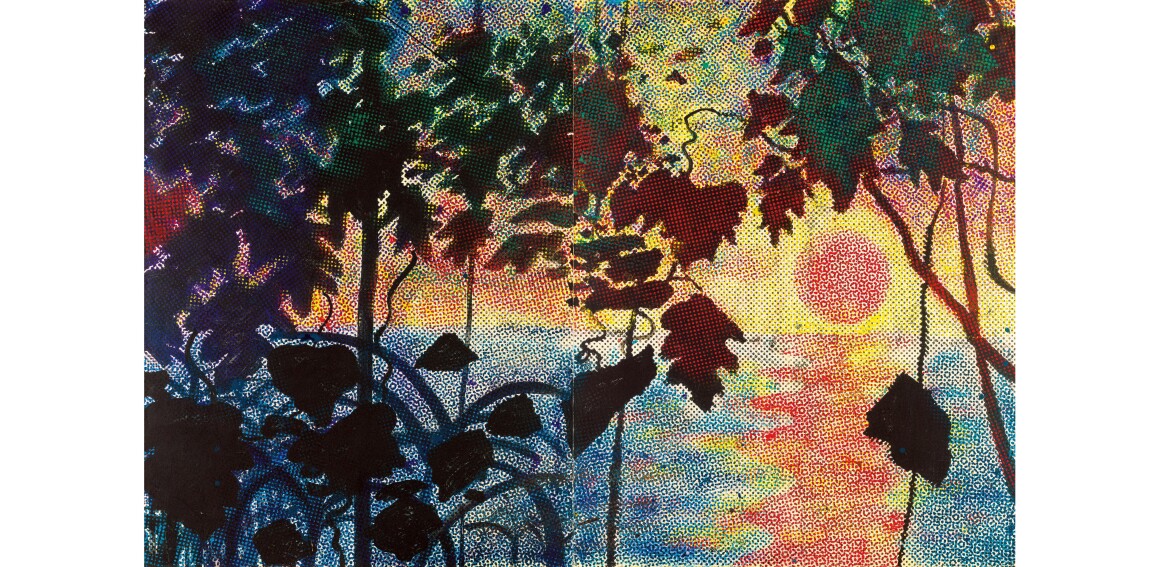D4FSD
-
 Sotheby's StoriesHow Jane Birkin's Original Hermès Birkin Bag Made History... Again | A Sotheby's Auction Story
Sotheby's StoriesHow Jane Birkin's Original Hermès Birkin Bag Made History... Again | A Sotheby's Auction Story -
 Handbags & FashionJane Birkin's Original Hermès Birkin Bag Shatters Auction Records at $10.1 Million | Sotheby's
Handbags & FashionJane Birkin's Original Hermès Birkin Bag Shatters Auction Records at $10.1 Million | Sotheby's -
 Geek WeekA 54-Pound Martian Meteorite Just Landed at Sotheby's — But How Did It Get Here?
Geek WeekA 54-Pound Martian Meteorite Just Landed at Sotheby's — But How Did It Get Here?

"The flower pictures were for Everyman, they embodied Warhol's power of concretization, the shortest possible route to stylization, both open to psychological interpretation and an ephemeral symbol. But the flowers... were also to be read as metaphors for the flowers of death."
One of only four known examples from the series to feature inky black blossoms against a vivid green ground, Andy Warhol's Flowers is a rare and striking iteration of one of the artist's most iconic motifs. Profoundly elegant in its 24-inch scale, Flowers is distinguished for its poignant simplicity, iconic palette, and extraordinary provenance, having been held in the collection of Barbara Gladstone. Created in 1964— the same year as his landmark debut at Leo Castelli Gallery—this work belongs to the celebrated series that helped cement Warhol's position at the forefront of American Pop Art. Based on a photograph by Patricia Caulfield, first published in Modern Photography, the image was cropped, flattened, and silkscreened onto canvas in a gesture of transformation that pushed the still life genre firmly into the age of mechanical reproduction. Executed at a pivotal moment in the artist's career and marked by its extreme rarity, Flowers stands as a poignant reflection of a generation and a masterwork of postmodern appropriation.

The Flowers series emerged at the suggestion of curator Henry Geldzahler, who encouraged Warhol to engage with the art historical tradition of still life painting. Warhol responded with a body of work that recasts the classical Vanitas through a Pop lens—serial, synthetic, and hauntingly detached. While visually seductive, the present work also carries a sense of impermanence and loss, underscoring Warhol's preoccupations with mortality, beauty, and repetition. Directly following his Death and Disaster series and anticipating the shadows, skulls, and self-portraits of his later years, Flowers delivers Warhol's most enduring themes with clarity and force. The Flowers create "a virtual, painful stillness," notes Heiner Bastian. "Since they seemingly only live on the surface, in the stasis of their coloration, they also initiate only the one metamorphosis which is a fundamental tenet of Warhol's work: moments in a notion of transience. The flower pictures were for Everyman, they embodied Warhol's power of concretization, the shortest possible route to stylization, both open to psychological interpretation and an ephemeral symbol. But the flowers...were also to be read as metaphors for the flowers of death. Warhol's Flowers resist every philosophical transfiguration as effectively as the pictures of disasters and catastrophes which they now seem ever closer to." (Heiner Bastian cited in: Exh. Cat., Berlin, Neue Nationalgalerie, Andy Warhol: Retrospective, 2002, p. 33)


"Warhol's Flowers resist every philosophical transfiguration as effectively as the pictures of disasters and catastrophes which they now seem ever closer to."
Exuberant now but soon to perish, the Flowers are Warhol's confrontation of the art historical lineage he so tirelessly worked to become a part of, and Late Four-Foot Flowers serves as a metaphor for the fleeting transience of everything Warhol loved: beauty, greatness, and celebrity. During the over half-century since their creation, Warhol's Flowers have infiltrated our global consciousness as the emblem of classic American Pop; their imagery acts as a metaphor for a generation that changed not only artistic but also social and political topographies in a supremely transformative decade. As is mythologized in art history, during the summer of 1964, he created canvases in square formats measuring 82, 48, and 24 inches, respectively, intended for a show with his new dealer Leo Castelli due to open in New York in November of that year. Michael Lobel emphasizes this exhibition's significance: "The show, his first with the gallery, represented a career milestone, since his first attempt at showing with Castelli, in 1961, had been met with rejection… Now he was joining the gallery that represented the cream of the crop of American vanguard art, including such leading lights as Robert Rauschenberg, Jasper Johns and Frank Stella" (Michael Lobel, 'In Transition: Warhol's Flowers' in: Exhibition Catalogue, New York, Eykyn Maclean, Andy Warhol Flowers, 2012, n.p.). The creation of his enigmatic flower paintings thus marked the apogee of artistic recognition for Warhol and truly served to carve out his position as a colossal force amongst a pantheon of artistic luminaries. The epitome of elegance, captivating black flowers set upon matte black and emerald ground, the present work is an icon of Andy Warhol's inimitable practice.



